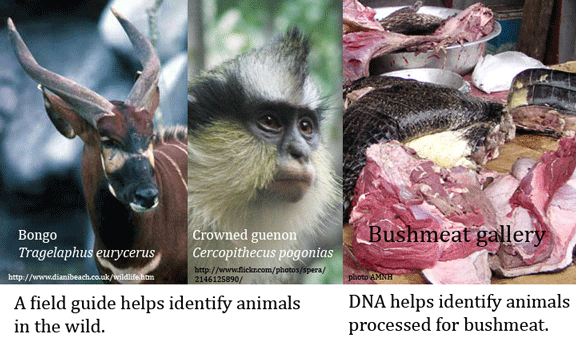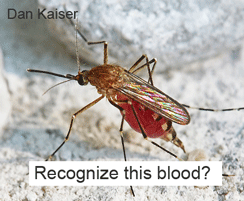 What hosts sustain arthropod disease vectors when they are not biting humans? In September 2009 PLoS ONE, researchers from Doñana Research Station, Seville, Spain, report on a “universal DNA barcoding method to identify vertebrate hosts from arthropod bloodmeals.” The investigators collected “wildlife engorged mosquitoes, culicoids [biting midges] and sand flies (Phlebotomiae)…using CDC traps supplied with dry ice to attract ectoparasites through light and CO2.”
What hosts sustain arthropod disease vectors when they are not biting humans? In September 2009 PLoS ONE, researchers from Doñana Research Station, Seville, Spain, report on a “universal DNA barcoding method to identify vertebrate hosts from arthropod bloodmeals.” The investigators collected “wildlife engorged mosquitoes, culicoids [biting midges] and sand flies (Phlebotomiae)…using CDC traps supplied with dry ice to attract ectoparasites through light and CO2.”
To design vertebrate-specific primers that would not amplify the more abundant arthropod DNA, Alcaide and colleagues “downloaded all vertebrate COI sequences (N = 18,2980 from the Classes Mammalia, Aves, Amphibia, and Reptilia that were available in the public domain managed by BOLD Systems database in January 2009” and compared these to “6,784 arthropod COI sequences from taxonomic groups that included blood-feeding species.” From this comparison they designed degenerate (multiple nucleotides at some positions) primers that were >99% matched to vertebrate target sequences and >99% mismatched to invertebrate targets. It would be helpful in this and other studies if the description of new primer(s) gave the position of the 3′ end of each primer as compared to mouse mitochondrial COI for instance. This would make it clear which portion of the COI barcode region is being amplified.
The first pass test with these primers gave PCR products in 43 of 100 mosquito bloodmeals, and reamplification with a slightly different primer set yielded sequenceable products in 97 of 100 cases; this re-amplification protocol was applied to the other vector species with “satisfactory” results. All except 5 matched at >99% level to vertebrate sequences from museum voucher specimens. For 3 of the uncertain identity sequences, they used the closest BOLD matches and knowledge of local fauna to “deduce that these species could be the Iberian hare Lepus granatensis, the red-legged partridge Alectoris rufa and the Egyptian mongoose Herpestes ichneumon.” The other two without close matches were from ticks collected while still feeding so the hosts were known. By my count they detected 18 mammalian and 26 avian host species in arthropod bloodmeals; to me this is remarkable variety given the relatively small number of bloodmeals tested. I look forward to learning more through DNA tracking of biting arthropods.
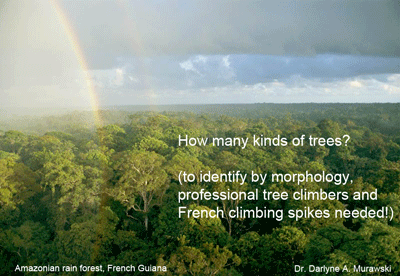 Two groups of researchers explore tropical forest plots with DNA barcodes in October 2009
Two groups of researchers explore tropical forest plots with DNA barcodes in October 2009 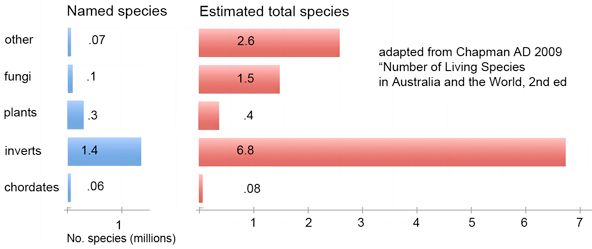
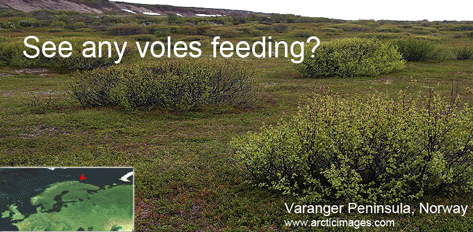
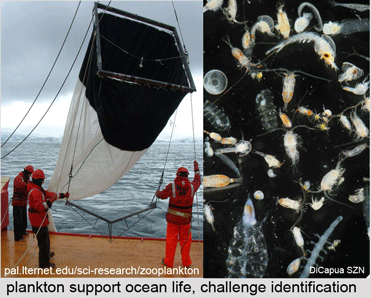 Marine zooplankton comprise an enormous mass of diverse organisms distributed throughout the world’s oceans from deep waters to surface. Zooplankton include representatives of at least dozen phyla, some of which are larval forms of much larger animals, and challenge identification with their diversity and tiny size. In
Marine zooplankton comprise an enormous mass of diverse organisms distributed throughout the world’s oceans from deep waters to surface. Zooplankton include representatives of at least dozen phyla, some of which are larval forms of much larger animals, and challenge identification with their diversity and tiny size. In 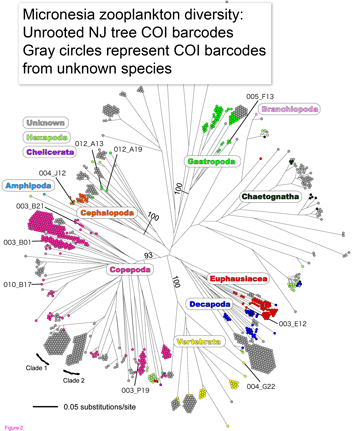 Machida and colleagues found evidence for 189 species, only 10 of which could be confidently matched to reference sequences. This report demonstrates that this sort of “kitchen blender” approach, which has previously been applied largely to bacterial and archaeal communities, shows promise for assemblages of eukaryotes and reveals surprisingly few organisms have reference sequences in databases. Identified organisms included several copepods as well as presumably larval forms of
Machida and colleagues found evidence for 189 species, only 10 of which could be confidently matched to reference sequences. This report demonstrates that this sort of “kitchen blender” approach, which has previously been applied largely to bacterial and archaeal communities, shows promise for assemblages of eukaryotes and reveals surprisingly few organisms have reference sequences in databases. Identified organisms included several copepods as well as presumably larval forms of 